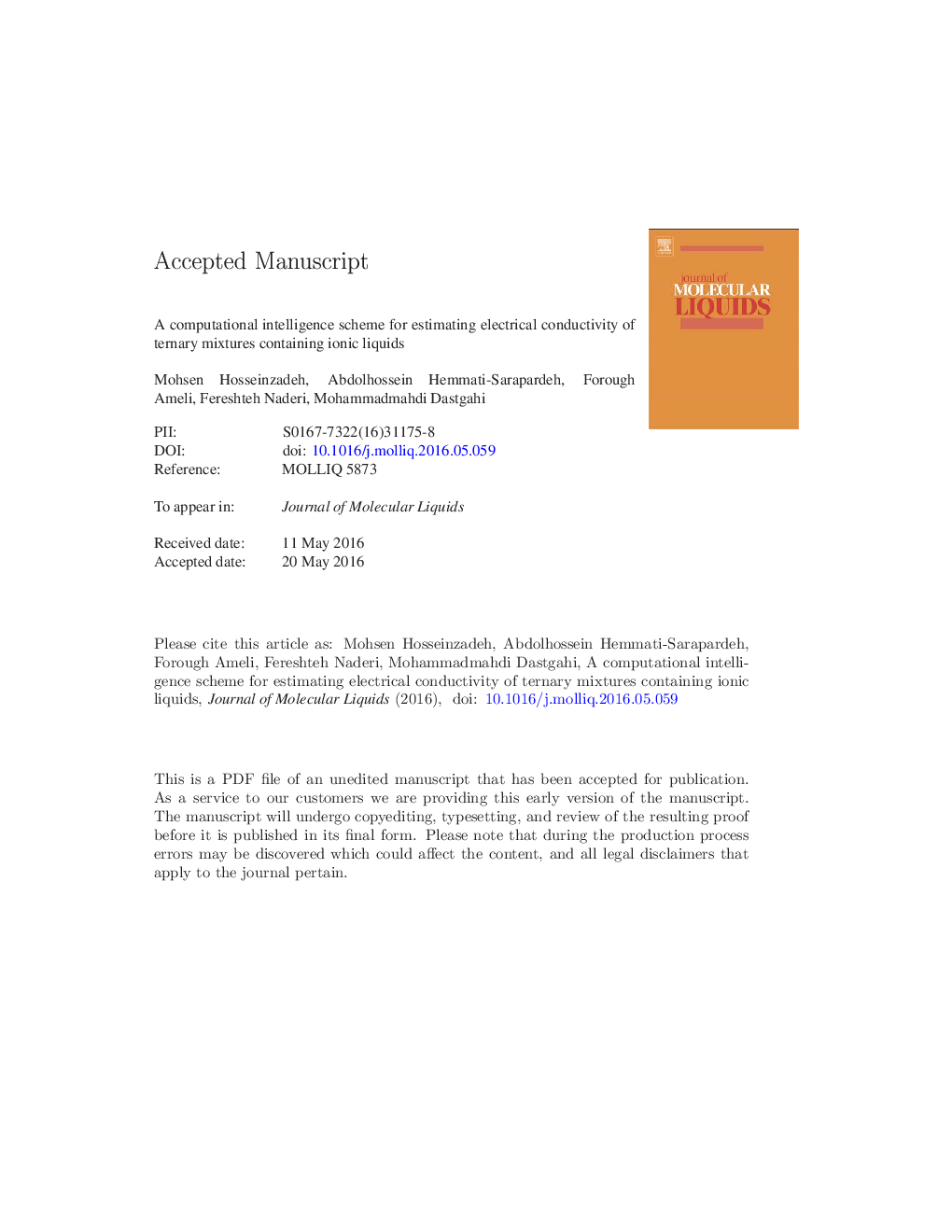| Article ID | Journal | Published Year | Pages | File Type |
|---|---|---|---|---|
| 5409826 | Journal of Molecular Liquids | 2016 | 35 Pages |
Abstract
Due to unique physical and chemical properties of ionic liquids (ILs), they received lots of attention in many industrial fields and are widely under research. Ionic liquids, also are emerging as important components for applications in electrochemical devices. To develop their applications and achieving desire properties, they are usually mixed with organic solvents. Applying ionic liquids in many applications needs the accurate and reliable data of electrical conductivity of ILs and their mixtures. To this end, a total of 224 experimental data were collected from literature and divided randomly into two datasets: 179 data was selected as training set and the remained 45 data was used as a testing set. Afterwards, a reliable modeling technique is developed for modeling the electrical conductivity of the ILs ternary mixtures. This approach is called least square support vector machine (LSSVM). The model parameters were optimized using the method of couple simulated annealing (CSA). The input model parameters were, temperature of the system, melting point, molecular weight and mole percent of each component. A comprehensive error investigation was carried out, yielding the well accordance between the predictions of the model and experimental data. The presented model can predict the dependency of electrical conductivity variations with input variables. Moreover, the sensitivity analyses demonstrated that, among the selected input parameters, the average melting point of mixture has the largest effect on the electrical conductivity. Furthermore, suspected data were detected using the Leverage approach, residual, Williams plot and statistical hat matrix. Except seven data points, the all data appear to be reliable.
Related Topics
Physical Sciences and Engineering
Chemistry
Physical and Theoretical Chemistry
Authors
Mohsen Hosseinzadeh, Abdolhossein Hemmati-Sarapardeh, Forough Ameli, Fereshteh Naderi, Mohammadmahdi Dastgahi,
